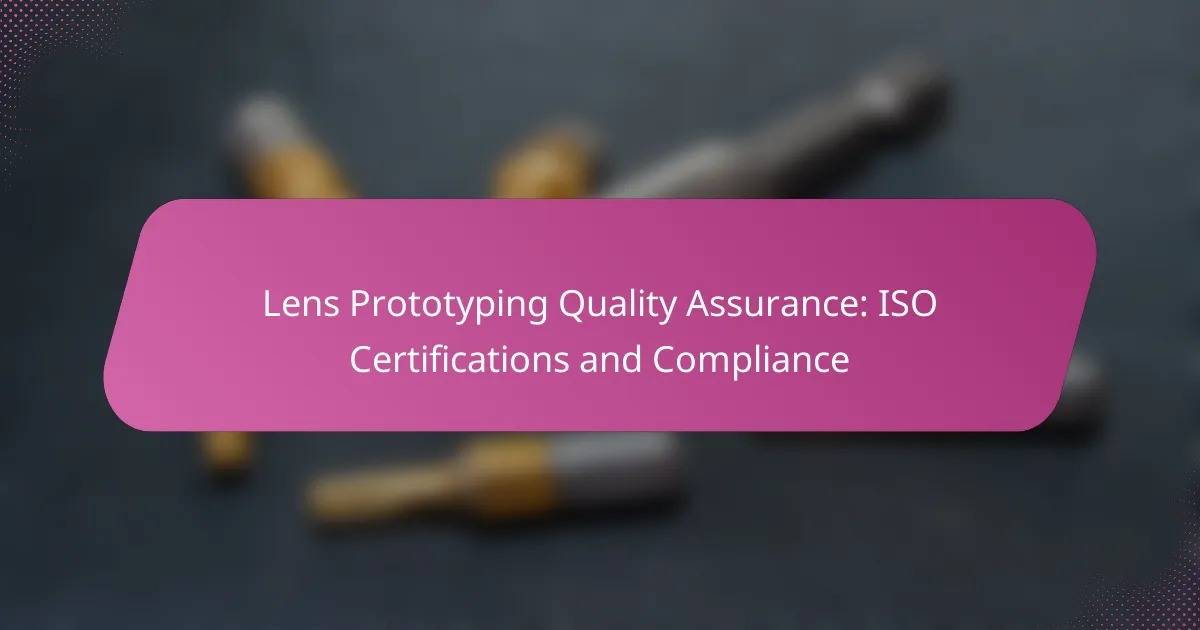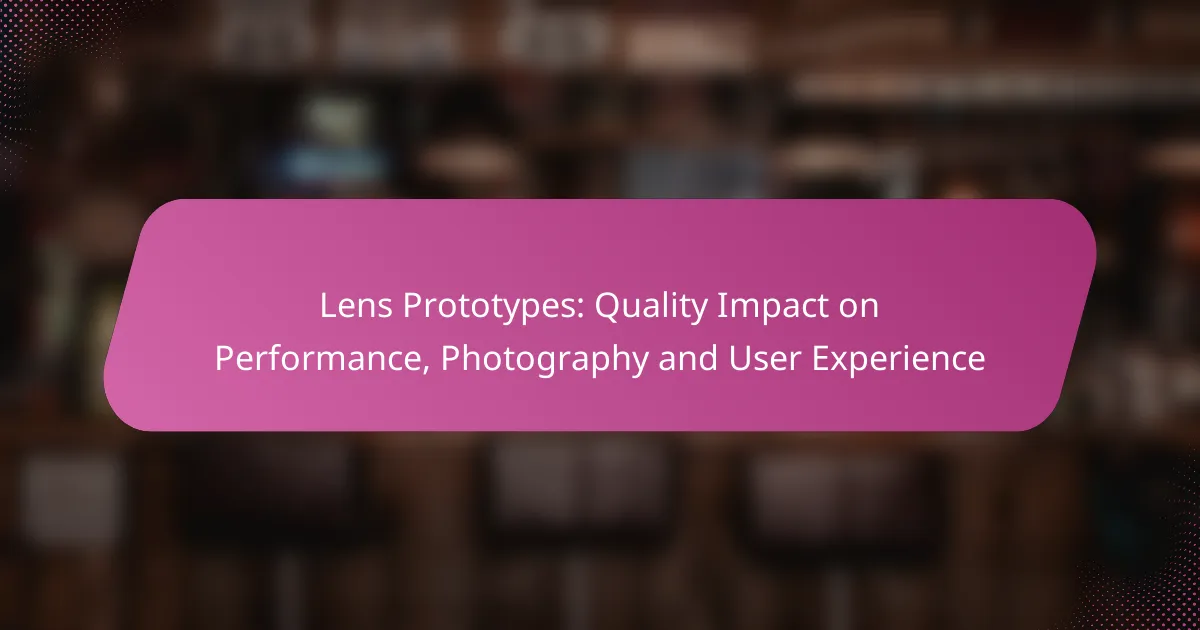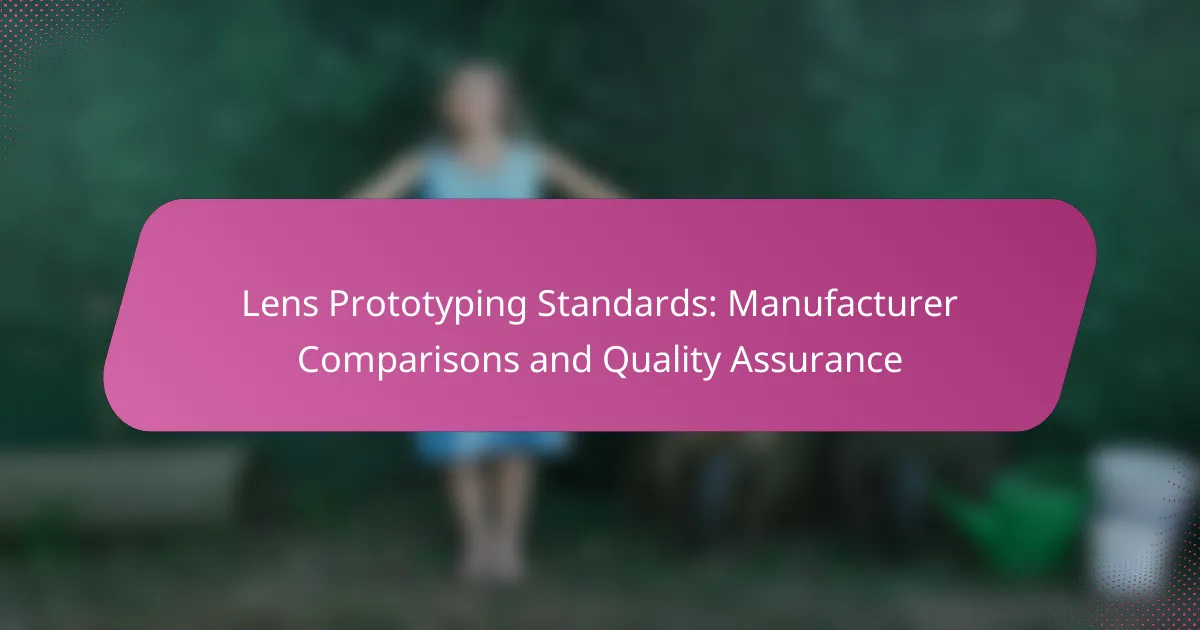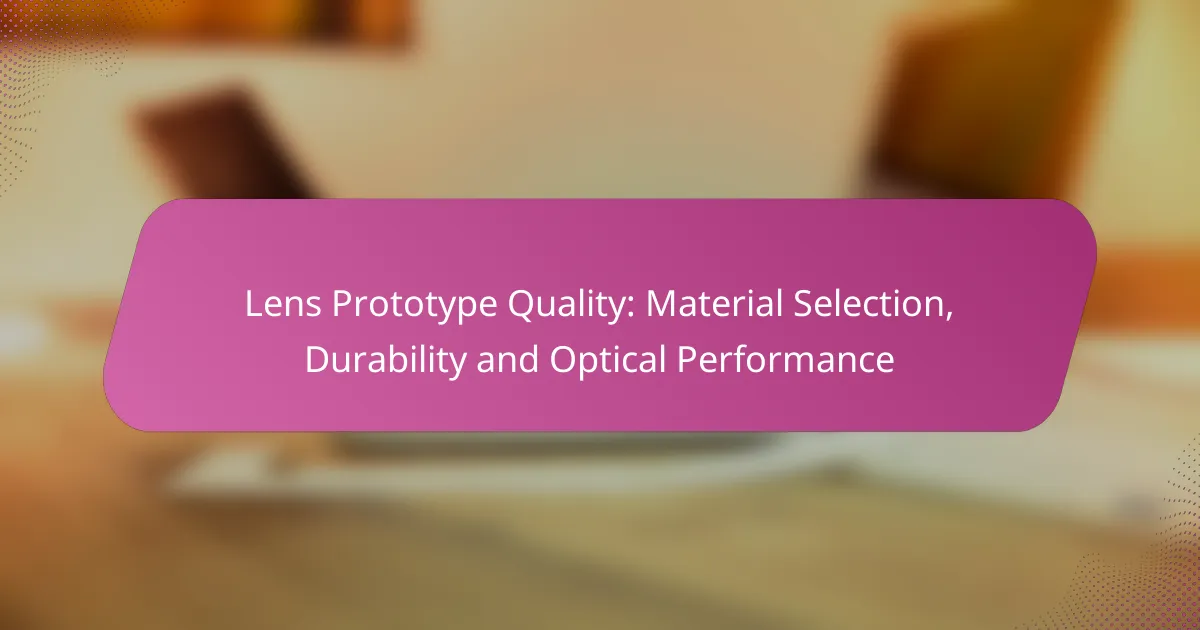Lens prototyping quality assurance is greatly enhanced through ISO certifications, which establish standardized processes and benchmarks for consistent product quality. Key certifications focus on quality management, medical device standards, and environmental practices, ensuring that the prototyping process meets industry requirements while minimizing environmental impact. Compliance with these standards involves thorough documentation and regular audits, reinforcing reliability and regulatory adherence in the production of lenses.
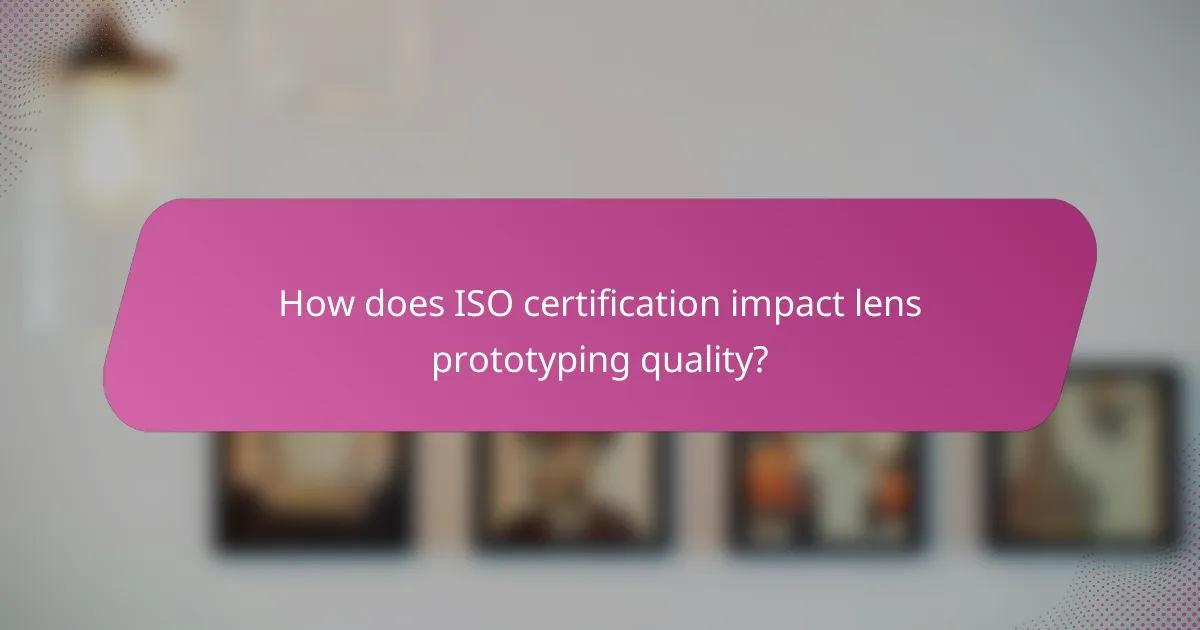
How does ISO certification impact lens prototyping quality?
ISO certification significantly enhances lens prototyping quality by establishing standardized processes and benchmarks. This ensures that products meet consistent quality measures, leading to improved reliability and customer satisfaction.
Ensures standardized quality measures
ISO certification mandates adherence to specific quality management standards, such as ISO 9001. This framework requires organizations to implement systematic processes for quality control, ensuring that every lens prototype is produced under uniform conditions.
Standardized quality measures help in reducing variability in production, which can lead to defects. By following these guidelines, companies can maintain a consistent level of quality across different batches of prototypes.
Enhances product reliability
With ISO certification, lens prototypes undergo rigorous testing and validation processes, which enhances their reliability. This means that the lenses are less likely to fail in real-world applications, providing assurance to manufacturers and end-users alike.
For example, a lens prototype that meets ISO standards is more likely to perform consistently under various environmental conditions, such as temperature fluctuations and humidity. This reliability is crucial for industries like photography and medical optics, where performance is paramount.
Facilitates international trade
ISO certification simplifies international trade by providing a universally recognized standard that can be trusted across borders. Companies with ISO-certified lens prototypes can more easily enter global markets, as buyers often prefer products that meet these established quality benchmarks.
Additionally, having ISO certification can reduce the need for extensive product testing in different countries, as it serves as a mark of quality that is acknowledged worldwide. This can lead to faster market entry and reduced costs associated with compliance in various regions.
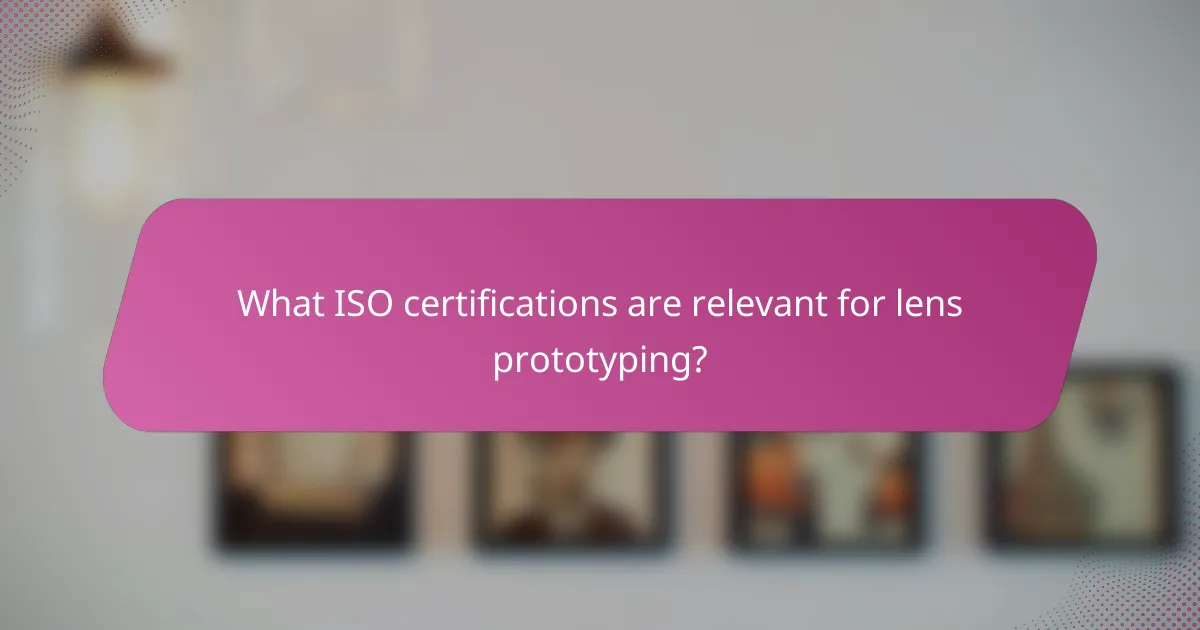
What ISO certifications are relevant for lens prototyping?
Several ISO certifications are crucial for lens prototyping, primarily focusing on quality management, medical device standards, and environmental practices. These certifications ensure that the prototyping process meets industry standards, enhances product reliability, and minimizes environmental impact.
ISO 9001: Quality management systems
ISO 9001 is a standard that outlines the criteria for a quality management system (QMS). It emphasizes a process approach to enhance customer satisfaction by consistently providing products that meet customer and regulatory requirements.
For lens prototyping, implementing ISO 9001 involves establishing clear processes for design, development, and production. This includes regular audits, documentation of procedures, and continuous improvement practices to ensure high-quality outcomes.
ISO 13485: Medical devices quality
ISO 13485 specifically addresses the quality management systems for medical devices, including those used in lens prototyping for healthcare applications. It ensures that organizations consistently meet both customer and regulatory requirements applicable to medical devices.
Compliance with ISO 13485 requires rigorous documentation, risk management, and validation processes. For instance, prototyping lenses for surgical instruments must undergo strict testing and quality checks to ensure safety and efficacy.
ISO 14001: Environmental management
ISO 14001 focuses on effective environmental management systems (EMS) that help organizations improve their environmental performance. This standard is increasingly relevant for lens prototyping as sustainability becomes a priority in manufacturing.
To align with ISO 14001, lens prototyping companies should assess their environmental impact, set measurable objectives, and implement practices to reduce waste and resource consumption. For example, using eco-friendly materials and optimizing energy use can significantly enhance compliance with this standard.
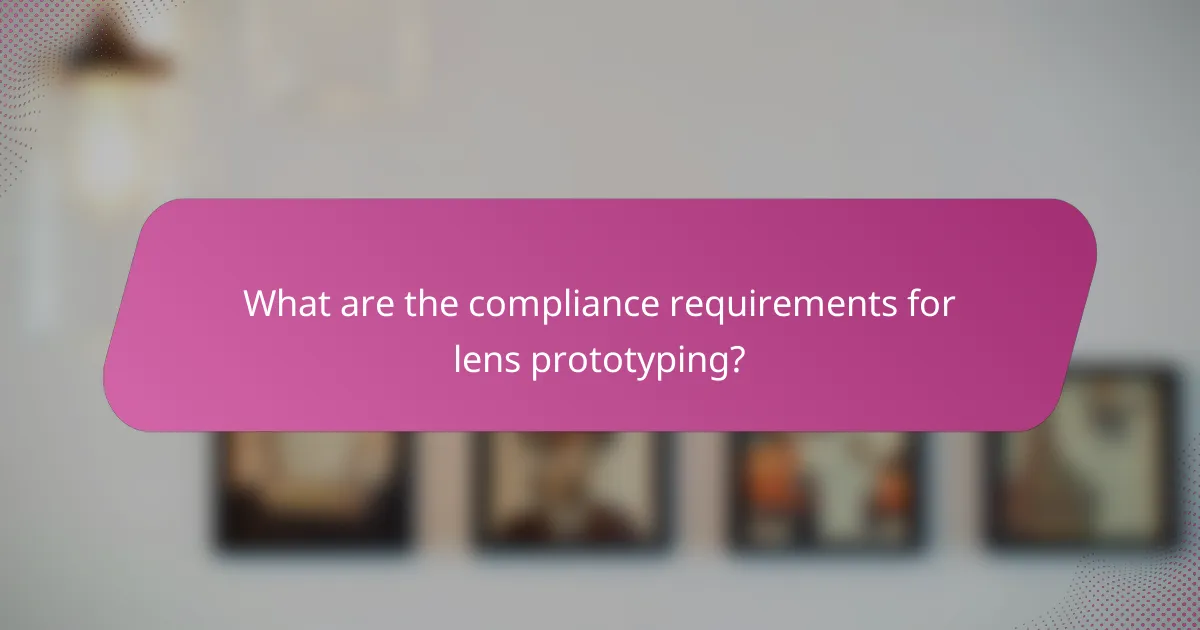
What are the compliance requirements for lens prototyping?
Compliance requirements for lens prototyping focus on adhering to established industry standards, maintaining thorough documentation, and conducting regular audits. These elements ensure that the prototyping process meets quality assurance benchmarks and regulatory expectations.
Adherence to industry standards
Lens prototyping must comply with various industry standards, such as ISO 9001 for quality management systems and ISO 13485 for medical devices if applicable. These standards outline the necessary processes and quality controls needed to ensure product reliability and safety.
Manufacturers should regularly review and update their practices to align with any changes in these standards. This proactive approach helps avoid compliance issues and enhances overall product quality.
Documentation and record-keeping
Thorough documentation is essential in lens prototyping to track processes, materials, and compliance with standards. This includes maintaining records of design specifications, testing results, and any deviations from established protocols.
Implementing a robust record-keeping system can facilitate easier audits and ensure that all necessary information is readily available. Regularly updating these documents helps maintain compliance and supports continuous improvement efforts.
Regular audits and assessments
Conducting regular audits and assessments is crucial for verifying compliance with quality standards in lens prototyping. These audits can be internal or external and should evaluate adherence to processes, documentation accuracy, and overall quality management.
Establishing a schedule for audits, such as quarterly or bi-annually, can help identify areas for improvement and ensure ongoing compliance. Engaging third-party auditors can provide an objective perspective and enhance credibility in the compliance process.
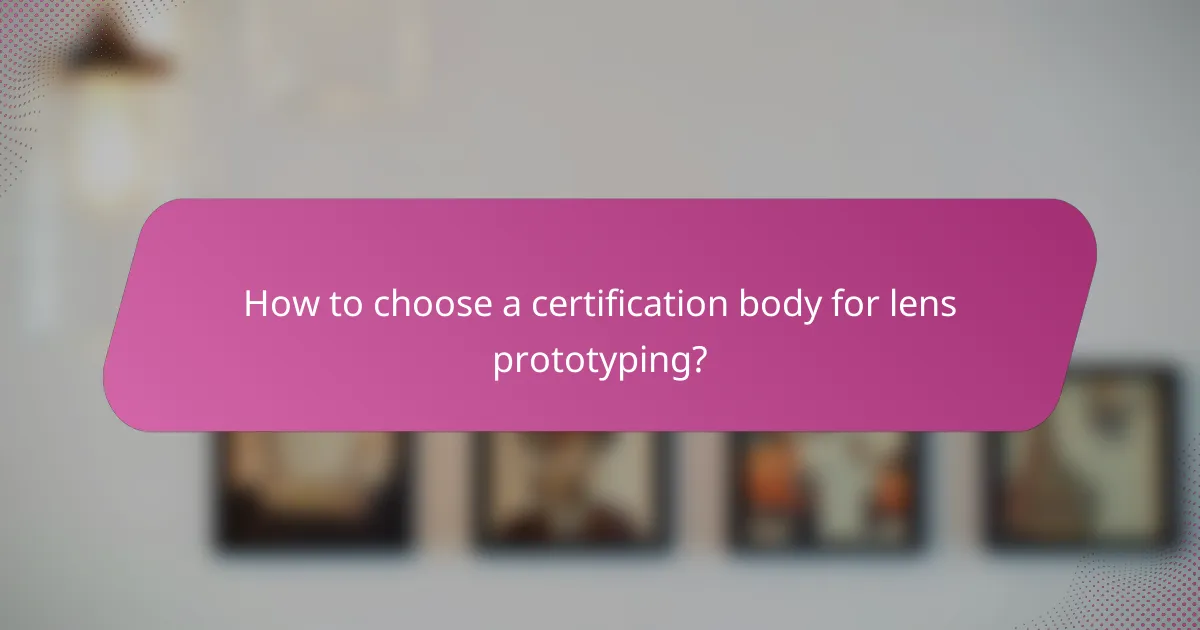
How to choose a certification body for lens prototyping?
Choosing a certification body for lens prototyping involves evaluating their credibility, industry experience, and the services they offer. A well-chosen body ensures compliance with relevant standards and enhances product quality.
Reputation and accreditation
When selecting a certification body, prioritize those with a strong reputation and recognized accreditation. Look for organizations accredited by relevant authorities, such as ISO or national standards bodies, which validate their competence and reliability.
Research reviews and testimonials from other companies in the optical industry to gauge the certification body’s standing. A reputable body will have a proven track record of successful certifications and satisfied clients.
Experience in the optical industry
Experience in the optical industry is crucial when choosing a certification body. A body familiar with lens prototyping will better understand the specific challenges and requirements of your products.
Consider bodies that have worked with similar companies or have expertise in optical standards. Their industry knowledge can provide valuable insights and guidance throughout the certification process.
Cost and service offerings
Cost is a significant factor when selecting a certification body, but it should not be the sole consideration. Compare the pricing structures of different bodies, noting any hidden fees or additional costs for services like audits or consultations.
Evaluate the range of services offered, such as training, support, and post-certification assistance. A body that provides comprehensive support may justify a higher cost, as it can save time and resources in the long run.
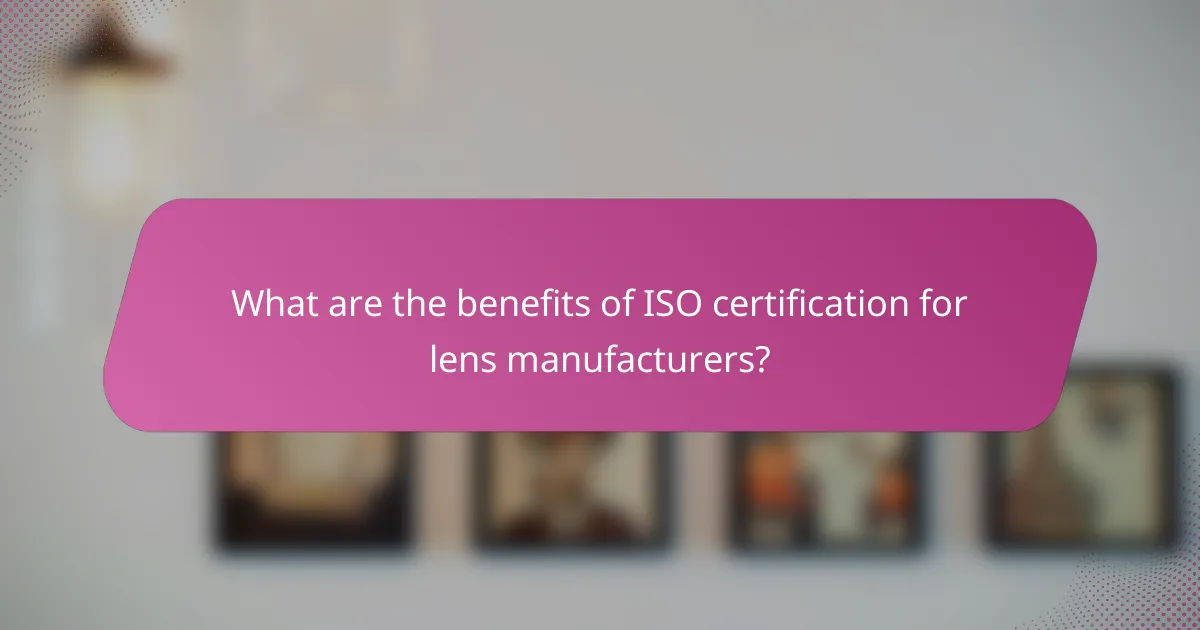
What are the benefits of ISO certification for lens manufacturers?
ISO certification provides lens manufacturers with a framework to ensure quality, safety, and efficiency in their production processes. This certification helps build trust with customers and can lead to increased sales and market presence.
Improved customer satisfaction
ISO certification enhances customer satisfaction by ensuring that products meet consistent quality standards. When lens manufacturers adhere to these standards, they reduce defects and improve product reliability, which directly impacts customer trust and loyalty.
For example, a lens manufacturer certified under ISO 9001 demonstrates a commitment to quality management, leading to fewer complaints and higher repeat business. Satisfied customers are more likely to recommend products, further boosting the manufacturer’s reputation.
Increased market competitiveness
ISO certification can significantly improve a lens manufacturer’s competitiveness in the market. It serves as a differentiator, signaling to potential customers that the company adheres to internationally recognized quality standards.
Manufacturers with ISO certification often find it easier to enter new markets or secure contracts with larger clients who prioritize quality assurance. This competitive edge can lead to increased sales and market share, especially in regions where compliance with ISO standards is a requirement.
Streamlined operational processes
ISO certification encourages lens manufacturers to adopt streamlined operational processes, leading to increased efficiency and reduced waste. By following ISO guidelines, companies can identify and eliminate inefficiencies in their production lines.
For instance, implementing ISO 14001 for environmental management can help a manufacturer reduce material costs and energy consumption. This not only enhances profitability but also aligns the company with sustainability goals, appealing to environmentally conscious consumers.
